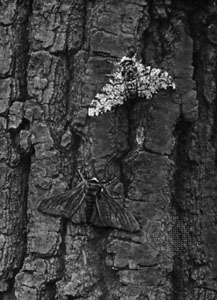Question #2b291
1 Answer
To a new environment, the high genetic variation population will adapt faster and have more chances to survive the change than the low genetic variation population.
Explanation:
- Environmental change
A new environment means new conditions and new constraints like heat, wetness, pH, salinity, ammount of light, feeding ressource ....
- Mutations behavior
The adaptation is a game with a lot of tries and fails. I recommend you to read this answer about mutations that explain how does it works and how does a mutation behave in a population considering its kind and its effects. http://socratic.org/questions/are-mutations-good-or-bad-explain#144352
- Genetic variation
Genetic variation is the fact that in a population, individuals are genetically different, and may have phenotypical differences because of the genetic variation.
For example in human population : size, color, shape...
- Low genetic variation population
If a population has a low genetic variation, the individuals are quasi identical each others, they are not or really few different.
So, if a new constraint appears in a new environment, they will all struggle because they don't have the potential abilities to resist the change. If there is not any or too few mutations, the population will struggle to maintain and the number of individuals will rapidly fall.
- High genetic variation population
If a population has a high genetic variation, it means that the individuals are more likely to show differences to the others individuals of their specie (colour, tallness, shape, sensitivity, resistance or sensibility...).
So, the chances that some individuals have the optimal kind of caracter to easily support a new constraint are consequent. The new constraints-resistant individuals will have better chances to survive, to feed and so to breed and transmit their genes and so their advantageous differences in the population. From generation to generation, the individuals will be more and more efficient because they have this shape/color/size... and the population will be rapidly (at evoutionnary times) adapted.
- Peppered moth's example
For example, the peppered moth could live as well in polluted forests and in the healthy ones because of its naturally different color polymorphism (Fig 1) due to his genetic variation ! In the polluted forests, the moths are mostly blacks and in the healthy ones, they are mostly whites, because of the bending conditions.
!

[Encyclopaedia Brittanica : http://www.britannica.com/animal/peppered-moth]
Have a good day ! :)

